
Nan Madol: The Venice of the Pacific
Discover the ancient city of Nan Madol in Micronesia, a mesmerizing blend of history, culture, and natural beauty on man-made islets connected by a network of canals.
Nan Madol, often referred to as the Venice of the Pacific, is an archaeological wonder located in the Federated States of Micronesia. This ancient city, built on a series of small artificial islands linked by a network of canals, offers a glimpse into the ingenuity and mystique of the Saudeleur Dynasty that ruled the region from around 1100 to 1628 AD. The site is a testament to the impressive engineering skills of its creators, with massive basalt stones arranged in intricate formations that boggle the mind. Walking through the ruins of Nan Madol, visitors can explore the remnants of over 90 man-made islets, each with its own unique function in the ancient society. The city served as the political and ceremonial hub of the Saudeleur Dynasty, and its ruins include royal tombs, residential areas, and religious structures. The ambiance of the site is both eerie and awe-inspiring, with the dense jungle encroaching upon the stone structures, adding to the sense of ancient mystery. Nan Madol is not just a historical site; it is also a place of natural beauty. The surrounding waters are crystal clear, teeming with marine life, making it a fantastic spot for snorkeling and diving. The lush greenery and the serene environment provide a perfect backdrop for a day of exploration. Visiting Nan Madol is like stepping back in time, offering a unique blend of history, culture, and natural beauty that is sure to captivate any traveler.
Local tips in Nan Madol
- Best visited during the dry season, from December to April, for pleasant weather and clear skies.
- Hire a local guide to gain deeper insights into the history and significance of the site.
- Bring snorkeling gear to explore the vibrant marine life around the islets.
- Wear sturdy shoes suitable for walking on uneven terrain and navigating through jungle paths.
- Respect the local customs and traditions, especially when visiting sacred sites within Nan Madol.
Nan Madol: The Venice of the Pacific
Nan Madol, often referred to as the Venice of the Pacific, is an archaeological wonder located in the Federated States of Micronesia. This ancient city, built on a series of small artificial islands linked by a network of canals, offers a glimpse into the ingenuity and mystique of the Saudeleur Dynasty that ruled the region from around 1100 to 1628 AD. The site is a testament to the impressive engineering skills of its creators, with massive basalt stones arranged in intricate formations that boggle the mind. Walking through the ruins of Nan Madol, visitors can explore the remnants of over 90 man-made islets, each with its own unique function in the ancient society. The city served as the political and ceremonial hub of the Saudeleur Dynasty, and its ruins include royal tombs, residential areas, and religious structures. The ambiance of the site is both eerie and awe-inspiring, with the dense jungle encroaching upon the stone structures, adding to the sense of ancient mystery. Nan Madol is not just a historical site; it is also a place of natural beauty. The surrounding waters are crystal clear, teeming with marine life, making it a fantastic spot for snorkeling and diving. The lush greenery and the serene environment provide a perfect backdrop for a day of exploration. Visiting Nan Madol is like stepping back in time, offering a unique blend of history, culture, and natural beauty that is sure to captivate any traveler.
When is the best time to go to Nan Madol?
Iconic landmarks you can’t miss
Kepirohi Waterfall
Kepirohi Waterfall: A breathtaking natural wonder in Pohnpei, perfect for hiking, swimming, and capturing unforgettable moments in nature.
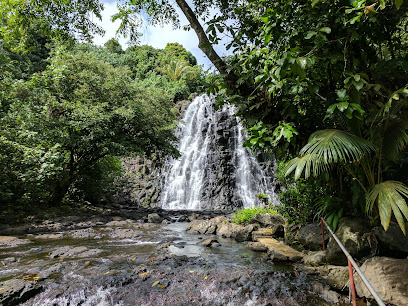
Nan Madol Visitors Center
Discover the ancient wonders of Nan Madol, a UNESCO World Heritage site in Pohnpei, showcasing breathtaking stone architecture and rich cultural history.

Trail Leading to Nan Madol Ruins
Discover the breathtaking hiking trail leading to the ancient Nan Madol Ruins in Pohnpei, a UNESCO World Heritage Site showcasing rich history and stunning landscapes.

Nan Douwas
Explore the breathtaking island of Nan Douwas in Pohnpei, where stunning landscapes meet rich cultural heritage and unforgettable experiences await.

Nan Mwoluhsei
Explore the breathtaking beauty and rich culture of Nan Mwoluhsei, a hidden island paradise in Pohnpei, perfect for adventure and relaxation.

Unmissable attractions to see
Kepirohi Waterfall
Explore the breathtaking Kepirohi Waterfall in Pohnpei, where nature's beauty meets adventure in a tranquil setting perfect for swimming and hiking.
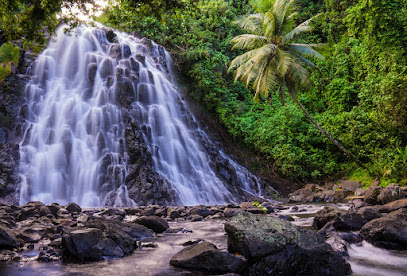
Fetus Falls
Experience the breathtaking beauty of Fetus Falls, a hidden gem in Pohnpei with stunning waterfalls and lush landscapes perfect for nature lovers.

鰻魚池
Explore the enchanting Eel Pools of Pohnpei, a serene natural wonder teeming with lush landscapes and captivating aquatic life.
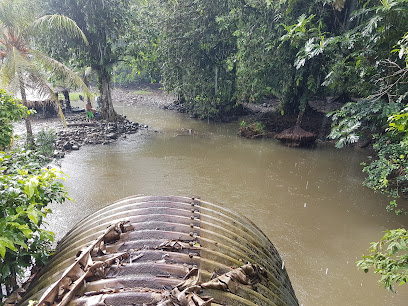
Spanish Wall Park
Explore the lush beauty and historical significance of Spanish Wall Park in Kolonia, Pohnpei - a serene escape for nature lovers and culture enthusiasts alike.
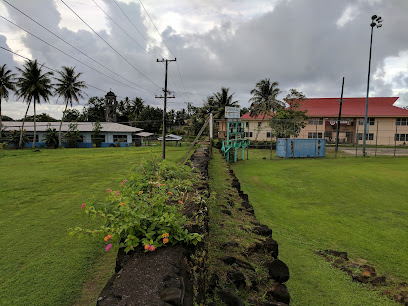
Lipwentiak Waterfall
Experience the breathtaking beauty of Lipwentiak Waterfall in Pohnpei—an unforgettable hiking and swimming oasis in the heart of nature.
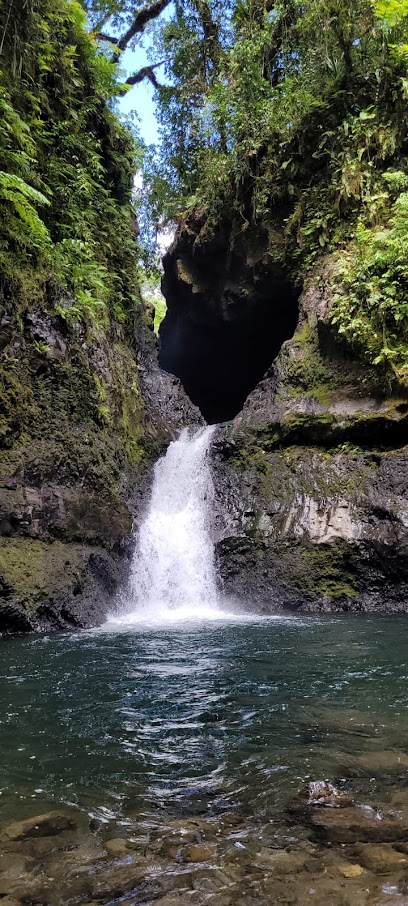
Sahwarlap Waterfall
Experience the breathtaking beauty of Sahwarlap Waterfall, a serene destination in Pohnpei perfect for hiking and swimming amidst stunning natural landscapes.

Paieke Marine Park
Explore the breathtaking beauty of Paieke Marine Park, a tropical paradise perfect for swimming, camping, and outdoor adventures.
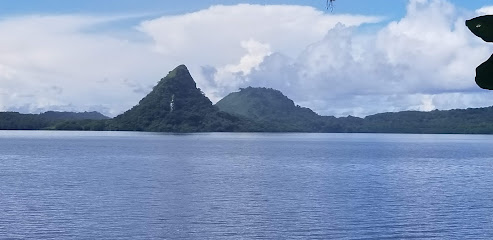
Lehnpaipohn Waterfall
Explore the breathtaking Lehnpaipohn Waterfall in Pohnpei, where adventure meets tranquility in a tropical paradise.

Rohi Waterfall
Experience the breathtaking beauty of Rohi Waterfall in Pohnpei, a nature lover's paradise with stunning hikes and serene swimming spots.

Sahwartik Waterfall
Explore the natural beauty of Sahwartik Waterfall, a serene park in Pohnpei offering hiking, swimming, and unforgettable experiences in nature.
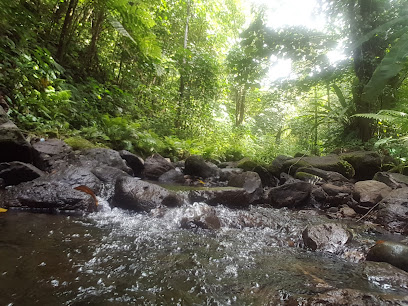
Nan Madol Visitors Center
Discover the ancient wonders of Nan Madol at the Visitors Center, your gateway to the historic city of Pohnpei's unique archaeological heritage.
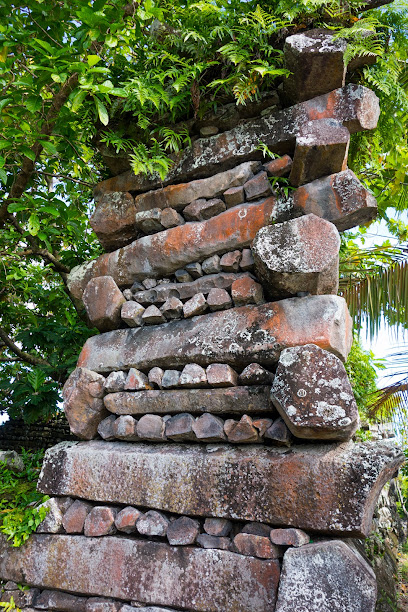
Iro Waterfall
Experience the breathtaking beauty of Iro Waterfall in Pohnpei, a serene oasis perfect for hiking and swimming amidst lush tropical landscapes.

Olotong Waterfall
Experience the breathtaking beauty of Olotong Waterfall in Pohnpei, where nature's serenity meets adventure in a lush tropical paradise.

Pohnpei State Botanical Garden
Experience the serene beauty of Pohnpei State Botanical Garden, a unique oasis showcasing diverse flora in the heart of Micronesia.
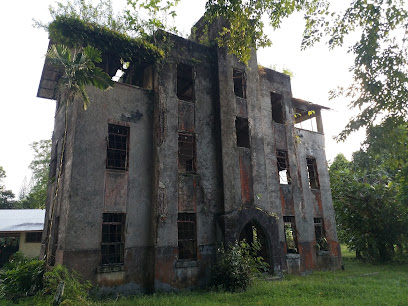
Nan Douwas
Explore Nan Douwas Island: A serene paradise in Pohnpei, offering stunning beaches, vibrant marine life, and rich cultural experiences.
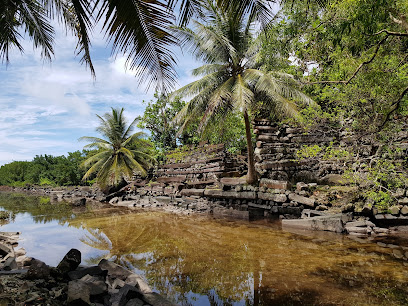
Essential places to dine
Cliff Hotel & Restaurant
Discover culinary delights at Cliff Hotel & Restaurant in Kolonia, Pohnpei – where local flavors meet stunning views.

Joy Hotel & Restaurant
Savor authentic Japanese cuisine at Joy Hotel & Restaurant in Kolonia, Pohnpei - where great food meets warm hospitality.

Chinastar Hotel & Restaurant
Experience authentic Chinese cuisine and local hospitality at Chinastar Hotel & Restaurant in Kolonia, Pohnpei - your perfect travel retreat.

7 Stars Inn & Riverside Restaurant
Discover authentic Pohnpeian cuisine amidst stunning riverside views at 7 Stars Inn & Riverside Restaurant on beautiful Pohnpei Island.

Ocean View Plaza Hotel
Experience breathtaking ocean views and authentic local cuisine at Ocean View Plaza Hotel on beautiful Pohnpei Island.
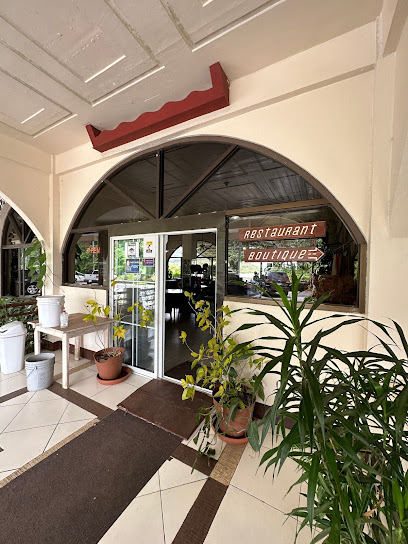
Arnold's
Discover Arnold's in Kolonia: A culinary experience blending local flavors with international cuisine in the heart of Pohnpei.
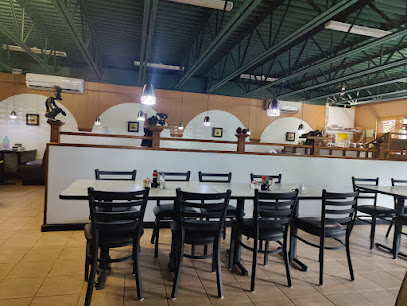
Sea Breeze Hotel
Discover culinary delights and comfortable lodging at Sea Breeze Hotel in Kolonia - your gateway to experiencing Pohnpei's rich culture.
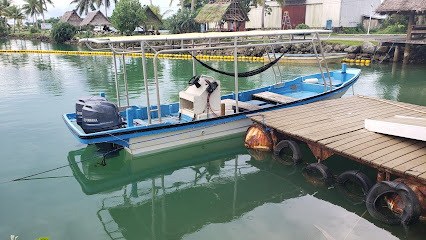
Town's Diner
Discover authentic Pohnpeian flavors at Town's Diner in Kolonia – a culinary gem where local cuisine meets classic diner comfort.
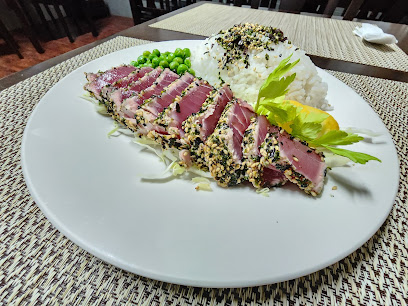
Fusion Restaurant
Discover exquisite flavors at Fusion Restaurant in Kolonia, Pohnpei – where local cuisine meets international flair.
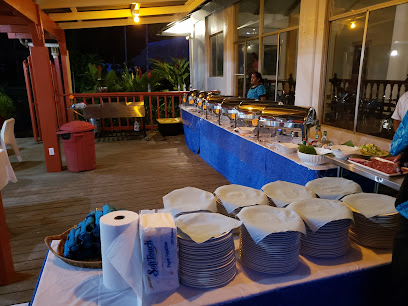
Hideaway Bar & Grill
Discover culinary delights at Hideaway Bar & Grill in Pohnpei - where local flavors meet international cuisine in a vibrant setting.
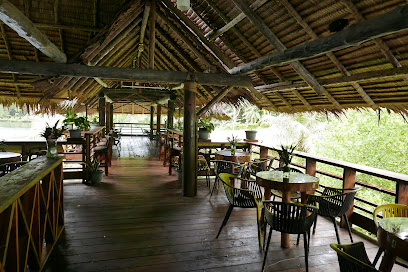
Nett Ramen
Discover the authentic taste of Japan at Nett Ramen in Pohnpei – where every bowl tells a story.

Cupid's Bar and Grille
Experience the flavors of Pohnpei at Cupid's Bar and Grille with stunning bay views and warm hospitality.
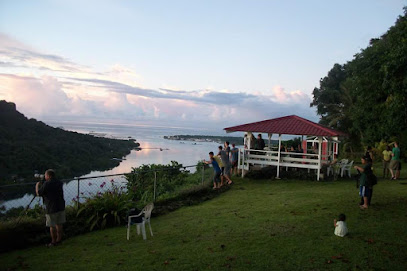
One World Plaza Cafe & Restaurant
Experience authentic Pohnpeian cuisine at One World Plaza Cafe & Restaurant—where every dish tells a story of local culture and flavor.
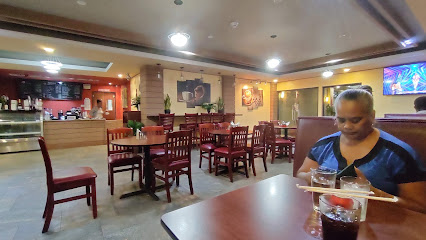
Kaselehlie Diner
Experience authentic Pohnpeian cuisine at Kaselehlie Diner - a buffet restaurant that delights every palate in Nett.

Angie's Fast Food
Experience local flavors and quick bites at Angie's Fast Food in Kolonia - A culinary gem on Pohnpei Island.
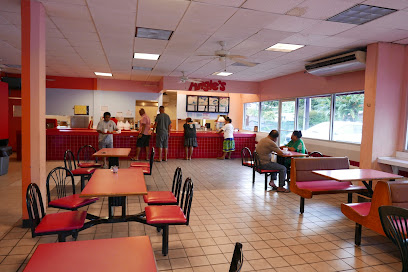
Markets, malls and hidden boutiques
Nan Madol
Explore the ancient canals and stone ruins of Nan Madol, a UNESCO World Heritage site and a remarkable testament to the engineering brilliance of the Micronesian culture.
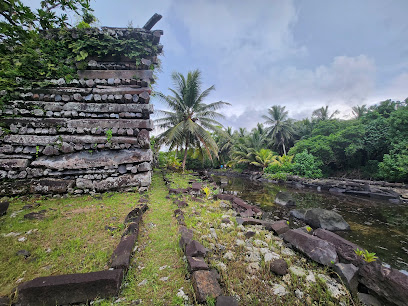
A-One Mart, Kolonia
Explore local flavors and everyday essentials at A-One Mart, a vibrant grocery store in Kolonia, Pohnpei.

Ace Commercial Center
Experience the vibrant local culture at Ace Commercial Center, your go-to grocery store in Kolonia, Pohnpei Island, featuring fresh produce and unique local goods.
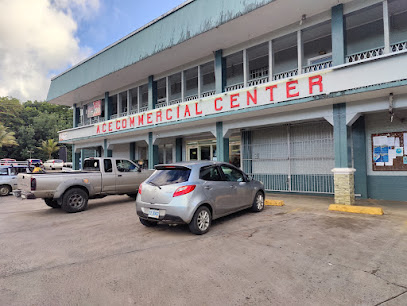
Palm Terrace Market
Explore fresh local produce and authentic Pohnpeian culture at Palm Terrace Market, a vibrant hub in Kolonia.
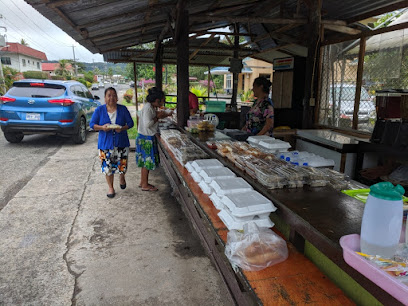
Ace Hardware
Discover quality tools and expert advice at Ace Hardware in Kolonia, Pohnpei – your trusted source for construction supplies and home improvement.
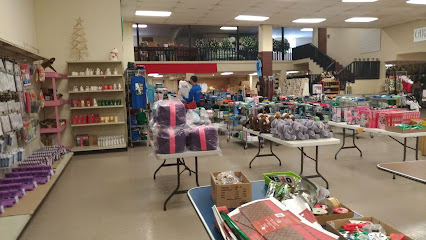
Isamu Nakasone Store (INS)
Discover authentic Japanese food and local delights at Isamu Nakasone Store in Kolonia, Pohnpei, your go-to destination for groceries and café treats.

Yoshies Supermarket
Explore the rich flavors of Japan at Yoshies Supermarket in Kolonia, Pohnpei. A must-visit for culinary enthusiasts and grocery shoppers alike.
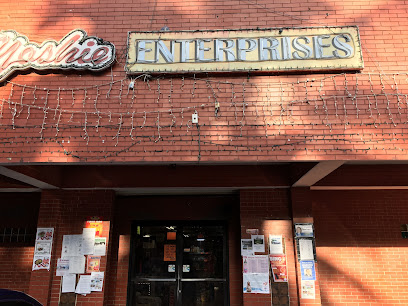
Nanwel Sakau Market
Experience the essence of Pohnpei at Nanwel Sakau Market, where local flavors and crafts come together in a vibrant community atmosphere.
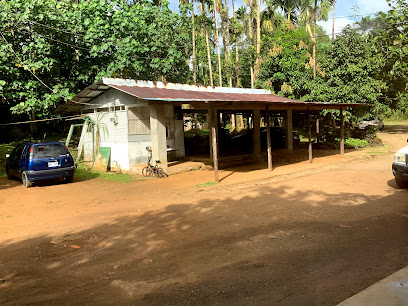
Ace Office Supplies
Discover essential supplies and local treasures at Ace Office Supplies in Kolonia, a must-visit for every traveler in Pohnpei.

Blue Nile
Explore Blue Nile in Kolonia for local produce and essential groceries, a must-visit destination for every traveler in Pohnpei.

Seven Eleven
Experience the convenience of Seven Eleven in Pohnpei, where local flavors meet travel essentials for an unforgettable adventure.

Imelda's Shoe Store
Discover stylish footwear and unique local fashion at Imelda's Shoe Store in Kolonia, Pohnpei – a must-visit for every traveler.
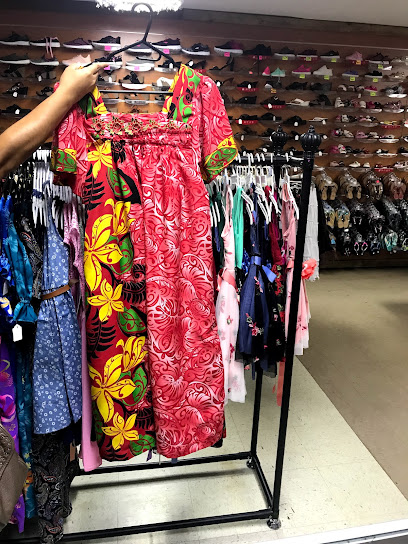
4 R's Mini Mart Store
Discover a unique shopping experience at 4 R's Mini Mart Store in Pohnpei, where local culture meets convenience and charm.
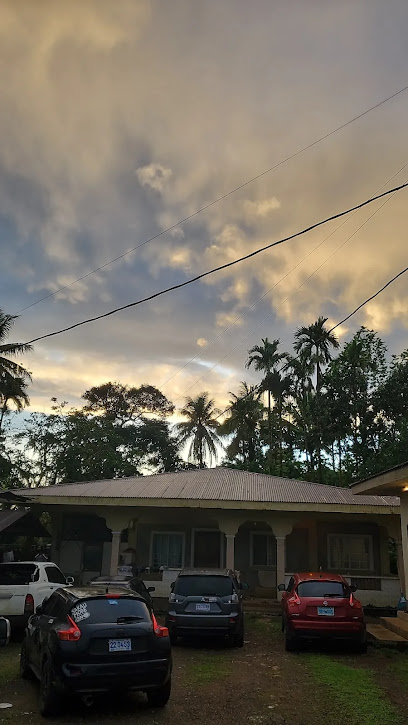
Black Sand Corp.
Discover local culture and flavors at Black Sand Corp., your one-stop shop for groceries and unique souvenirs in Pohnpei.
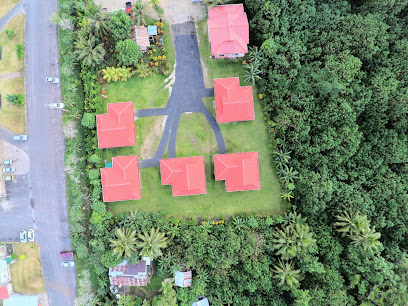
En's 7 Stars Store
Explore local culture and essentials at En's 7 Stars Store in Pohnpei—your one-stop shop for unique souvenirs and everyday needs.
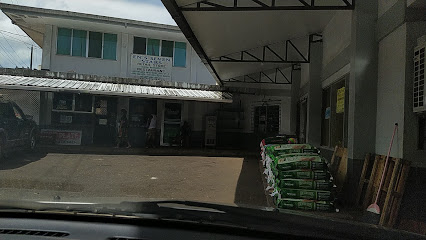
Essential bars & hidden hideouts
Nan Madol
Discover the enchanting ruins of Nan Madol, an ancient city of stone, history, and mystery in the heart of Pohnpei.
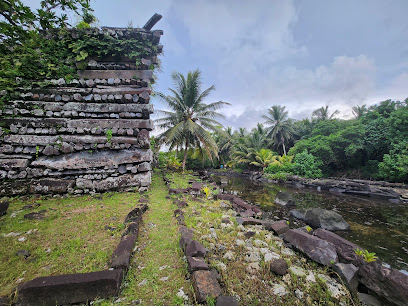
7 Stars Inn & Riverside Restaurant
Experience the serene beauty of Pohnpei at 7 Stars Inn & Riverside Restaurant, where comfort meets local flavors amidst breathtaking landscapes.

Mangrove Bay Bar
Discover the lively ambiance and tropical drinks at Mangrove Bay Bar, the ultimate nightlife experience in Kolonia, Pohnpei.
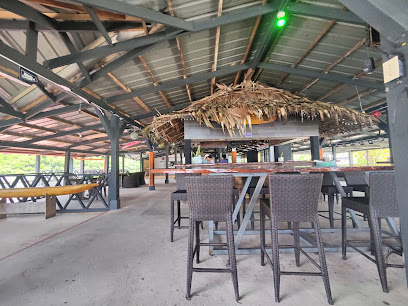
Arnold's
Experience the vibrant flavors of Arnold's in Kolonia, Pohnpei – where local charm meets culinary delight.
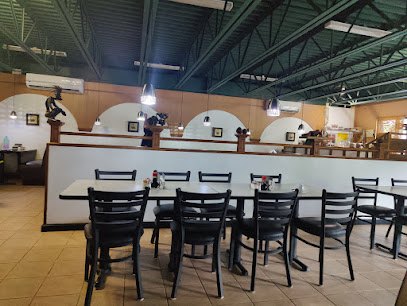
Town's Diner
Discover the flavors of Pohnpei at Town's Diner in Kolonia, offering a menu brimming with local and American favorites in a cozy setting.
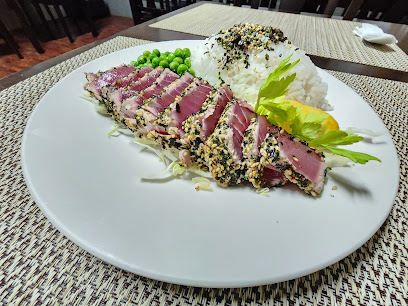
Fusion Restaurant
Discover the flavors of Pohnpei at Fusion Restaurant, where local ingredients meet global culinary techniques in a vibrant atmosphere.
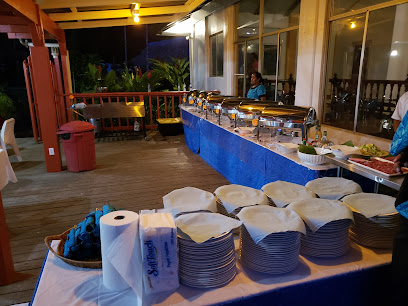
Hideaway Bar & Grill
Discover the flavors of Pohnpei at Hideaway Bar & Grill, a culinary oasis offering local and international delights amidst breathtaking scenery.
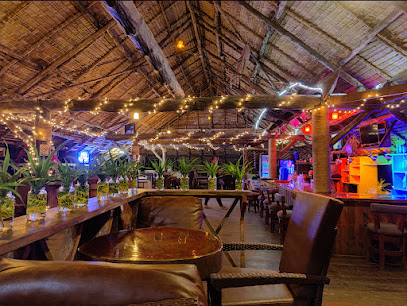
Nett Ramen
Experience authentic Japanese ramen in Pohnpei at Nett Ramen, where delicious flavors and welcoming atmosphere await.

Coco Marina Club
Experience the vibrant nightlife at Coco Marina Club in Kolonia, Pohnpei, where stunning marina views meet refreshing drinks and local culture.
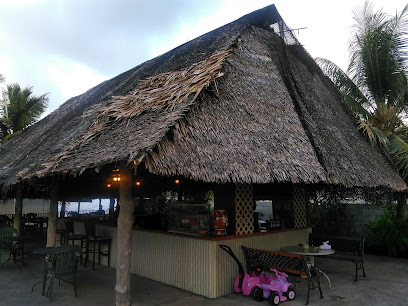
One World Plaza Cafe & Restaurant
Discover the flavors of Pohnpei at One World Plaza Cafe & Restaurant, a top choice for tourists seeking local and international cuisine in a cozy setting.
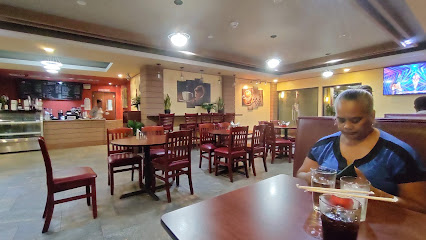
Cafe Ole
Discover the flavors of Pohnpei at Café Ole, where local cuisine meets a cozy atmosphere, perfect for travelers seeking culinary delights.
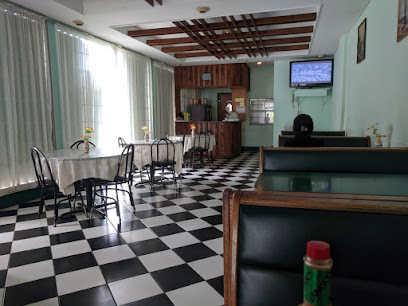
Wills and Joe’s Bar and Grill
Discover the vibrant flavors and welcoming atmosphere of Wills and Joe's Bar and Grill, a top destination for locals and tourists in Pohnpei.

Darcy Nisha Mae Armisais
Experience the authentic flavors of Pohnpei at Darcy Nisha Mae Armisais, a must-visit restaurant in Nett for a delightful culinary journey.

Cherman Hadley
Discover the rich flavors of Pohnpei at Cherman Hadley, a culinary haven offering local and fusion dishes in a warm, inviting atmosphere.
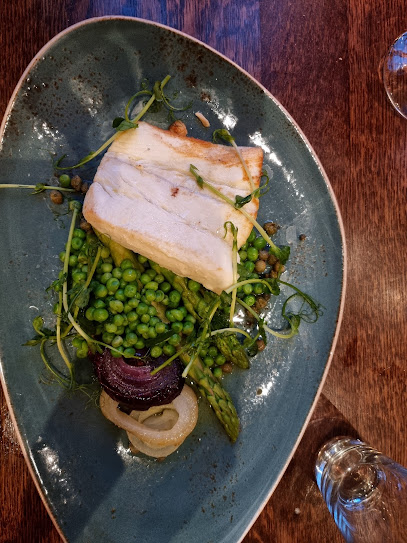
Hot Plate
Experience the authentic flavors of Pohnpei at Hot Plate, a top-rated takeout restaurant in Kolonia, serving delightful local dishes.

Local Phrases
-
- HelloKaselel
[kah-seh-lehl] - GoodbyeKalahngan
[kah-lahng-gahn] - YesEhng
[ehng] - NoEnggaw
[ehng-gow] - Please/You're welcomePwehl
[pwehl] - Thank youKalangan
[kah-lahng-gahn] - Excuse me/SorryPwehl
[pwehl] - How are you?Kilisou met?
[kee-lee-soh meht] - Fine. And you?Kilisou. A anin?
[kee-lee-soh. ah ah-neen] - Do you speak English?Kaselel di naniti?
[kah-seh-lehl dee nah-nee-tee] - I don't understandKilisou me ak?
[kee-lee-soh meh ahk]
- HelloKaselel
-
- I'd like to see the menu, pleaseKilisou met sohng me menu, pwehl
[kee-lee-soh meht sohng meh meh-noo, pwehl] - I don't eat meatDiak kainim me kang
[dee-ahk kah-ee-neem meh kahng] - Cheers!Kalahngan!
[kah-lahng-gahn] - I would like to pay, pleaseKilisou met sohng me isis, pwehl
[kee-lee-soh meht sohng meh ee-sees, pwehl]
- I'd like to see the menu, pleaseKilisou met sohng me menu, pwehl
-
- Help!Sohng
[sohng] - Go away!Sohng
[sohng] - Call the Police!Sohng kan pohlees!
[sohng kahn poh-lees] - Call a doctor!Sohng kan dokta!
[sohng kahn dohk-tah] - I'm lostDiak sohng en sohng
[dee-ahk sohng ehn sohng] - I'm illDiak koapw me
[dee-ahk koh-ah-poo meh]
- Help!Sohng
-
- I'd like to buy...Kilisou met nuh...
[kee-lee-soh meht noo-ah...] - I'm just lookingDiak sohng nuh
[dee-ahk sohng noo-ah] - How much is it?Kilisou met sohng me solahng?
[kee-lee-soh meht sohng meh soh-lahng] - That's too expensiveDiak sohla solahng
[dee-ahk soh-lah soh-lahng] - Can you lower the price?Diak sohng solahng
[dee-ahk sohng soh-lahng]
- I'd like to buy...Kilisou met nuh...
-
- What time is it?Kilisou met sohng me tohk?
[kee-lee-soh meht sohng meh tohk] - It's one o'clockKilisou me tohk ahluk
[kee-lee-soh meh tohk ah-loo-k] - Half past (10)Ahluk sohng (10)
[ah-loo-k sohng (10)] - MorningDehngal
[dehng-ahl] - AfternoonPwud
[pwood] - EveningPwehl
[pwehl] - YesterdayEkal
[eh-kahl] - TodayAnei
[ah-nay] - TomorrowKapw
[kah-poo] - 1Ahluh
[ah-loo] - 2Ruhda
[roo-dah] - 3Tuhlu
[too-loo] - 4Wahlu
[wah-loo] - 5Lima
[lee-mah] - 6Onom
[oh-nom] - 7Fitu
[fee-too] - 8Waluu
[wah-loo] - 9Siwa
[see-wah] - 10Sapw
[sah-poo]
- What time is it?Kilisou met sohng me tohk?
-
- Where's a/the...?Kilisou met...
[kee-lee-soh meht...] - What's the address?Kilisou met sohng me adras?
[kee-lee-soh meht sohng meh ah-drahs] - Can you show me (on the map)?Diak sohng ngei (pwehl en map)?
[dee-ahk sohng ngeh-ee (pwehl ehn map)] - When's the next (bus)?Kilisou met sohng me nohng (bus)?
[kee-lee-soh meht sohng meh nohng (bus)] - A ticket (to ....)Sohng me tekid (to ....)
[sohng meh teh-keed (to ....)]
- Where's a/the...?Kilisou met...
History of Nan Madol
-
Nan Madol, often referred to as the 'Venice of the Pacific,' is an ancient city built on a series of artificial islets in a lagoon off the eastern shore of Pohnpei, in the Federated States of Micronesia. The city dates back to the early part of the 12th century, constructed by the Saudeleur Dynasty. The origins of Nan Madol remain shrouded in mystery, and its builders are believed to have transported massive basalt stones from the opposite side of Pohnpei Island using an unknown method.
-
The Saudeleur Dynasty ruled Nan Madol and the surrounding islands for several centuries, from approximately 1100 to 1628 AD. The Saudeleur were known for their centralized and hierarchical government. They imposed strict social and religious order, which included the construction of Nan Madol as a ceremonial and political center. The dynasty's reign is characterized by its unique blend of autocratic rule and theocratic governance, which left a lasting impact on Pohnpeian culture and society.
-
Nan Madol is renowned for its distinctive and sophisticated architecture. The city is composed of nearly 100 artificial islets, interconnected by a network of canals. The islets are made from large basalt stones, some weighing up to 50 tons. The construction techniques used to build Nan Madol, particularly the transport and placement of the massive stones, continue to baffle historians and archaeologists. Key structures include the royal mortuary, Nandowas, and the administrative center, Pahn Kadira.
-
Nan Madol served as a major religious and ceremonial center for the Saudeleur Dynasty. The city housed numerous temples, burial places, and sites for ritual activities. The islet of Nandowas, in particular, is believed to have been a royal mortuary where the Saudeleur rulers were laid to rest. The city's layout and structures reflect the importance of spiritual and religious practices in the Saudeleur society, and Nan Madol's religious significance continues to be acknowledged by modern-day Pohnpeians.
-
The Saudeleur Dynasty came to an end in the early 17th century due to internal strife and external pressures. According to oral traditions, the dynasty was overthrown by Isokelekel, a semi-divine warrior from Kosrae. Isokelekel led a successful rebellion against the Saudeleur rulers, marking the end of their reign and the beginning of a new era for Pohnpei. The fall of the Saudeleur Dynasty led to significant changes in the political and social structure of the island, and Nan Madol was gradually abandoned.
-
Nan Madol remained largely abandoned and shrouded in legend until it was rediscovered by Western explorers in the 19th century. Since then, the site has attracted the interest of archaeologists, historians, and adventurers. Numerous studies have been conducted to uncover the mysteries of Nan Madol, including its construction methods, purpose, and the daily lives of its inhabitants. Despite extensive research, many aspects of Nan Madol's history and significance remain enigmatic, adding to its allure as an archaeological marvel.
-
Today, Nan Madol is a UNESCO World Heritage Site and one of the most significant archaeological sites in the Pacific. Efforts are being made to preserve and protect the ruins from environmental threats and human impact. The site continues to hold cultural and historical importance for the people of Pohnpei, who regard it as a testament to their rich heritage. Nan Madol is a popular destination for travelers and researchers alike, offering a glimpse into the ancient and mysterious past of Micronesia.
Nan Madol Essentials
-
Nan Madol is located on the eastern shore of Pohnpei Island in the Federated States of Micronesia. The nearest airport is Pohnpei International Airport (PNI), which has regular flights from major hubs such as Guam and Honolulu. Upon arrival at Pohnpei International Airport, travelers can take a taxi or arrange for a hotel shuttle to reach their accommodations. From there, local tours and transportation services can be arranged to visit Nan Madol.
-
Transportation around Pohnpei, including to Nan Madol, is primarily by taxi or rental car. Taxis are readily available and are a convenient way to get around the island. Rental cars can be arranged through local agencies, providing flexibility for exploring at your own pace. Some tour operators also offer guided tours to Nan Madol, including transportation.
-
The official currency in Micronesia is the United States Dollar (USD). Credit cards are accepted in some hotels, restaurants, and larger shops, but it is advisable to carry cash, especially when visiting remote areas like Nan Madol. ATMs are available in Kolonia, the capital of Pohnpei, where you can withdraw cash.
-
Pohnpei is generally a safe destination for tourists, but it's advisable to take standard precautions. Avoid walking alone at night in unfamiliar areas and keep an eye on your belongings in crowded places. There are no specific high-crime areas targeting tourists, but staying vigilant and aware of your surroundings is always a good practice.
-
In case of an emergency, dial 911 for immediate assistance. Pohnpei has local police and medical facilities available. It is recommended to have travel insurance that covers medical emergencies. For minor health issues, there are pharmacies in Kolonia where you can purchase over-the-counter medications.
-
Fashion: Do dress modestly, especially when visiting cultural or religious sites. Avoid wearing revealing clothing. Religion: Do respect local customs and traditions. Always ask for permission before taking photos of people or sacred sites. Public Transport: Do be respectful and courteous to drivers and other passengers. Don't eat or drink on public transport. Greetings: Do greet people with a friendly 'hello' or 'kaoke.' A handshake is also acceptable. Eating & Drinking: Do try local dishes and accept food offerings graciously. Don't refuse hospitality, as it is considered impolite.
-
To experience Nan Madol like a local, consider hiring a local guide who can provide in-depth knowledge about the history and significance of the site. Visit during low tide for easier access to the ruins. Engage with the locals to learn about their culture and stories associated with Nan Madol. Don't miss the opportunity to explore other parts of Pohnpei, such as the stunning waterfalls and lush rainforests.
Nearby Cities to Nan Madol
-
Things To Do in Pohnpei
-
Things To Do in Kolonia
-
Things To Do in Kosrae
-
Things To Do in Weno
-
Things To Do in Chuuk
-
Things To Do in Denigomodu
-
Things To Do in Aiwo
-
Things To Do in Uaboe
-
Things To Do in Boe
-
Things To Do in Buada
-
Things To Do in Anabar
-
Things To Do in Ijuw
-
Things To Do in Anibare
-
Things To Do in Yaren
-
Things To Do in Kavieng







